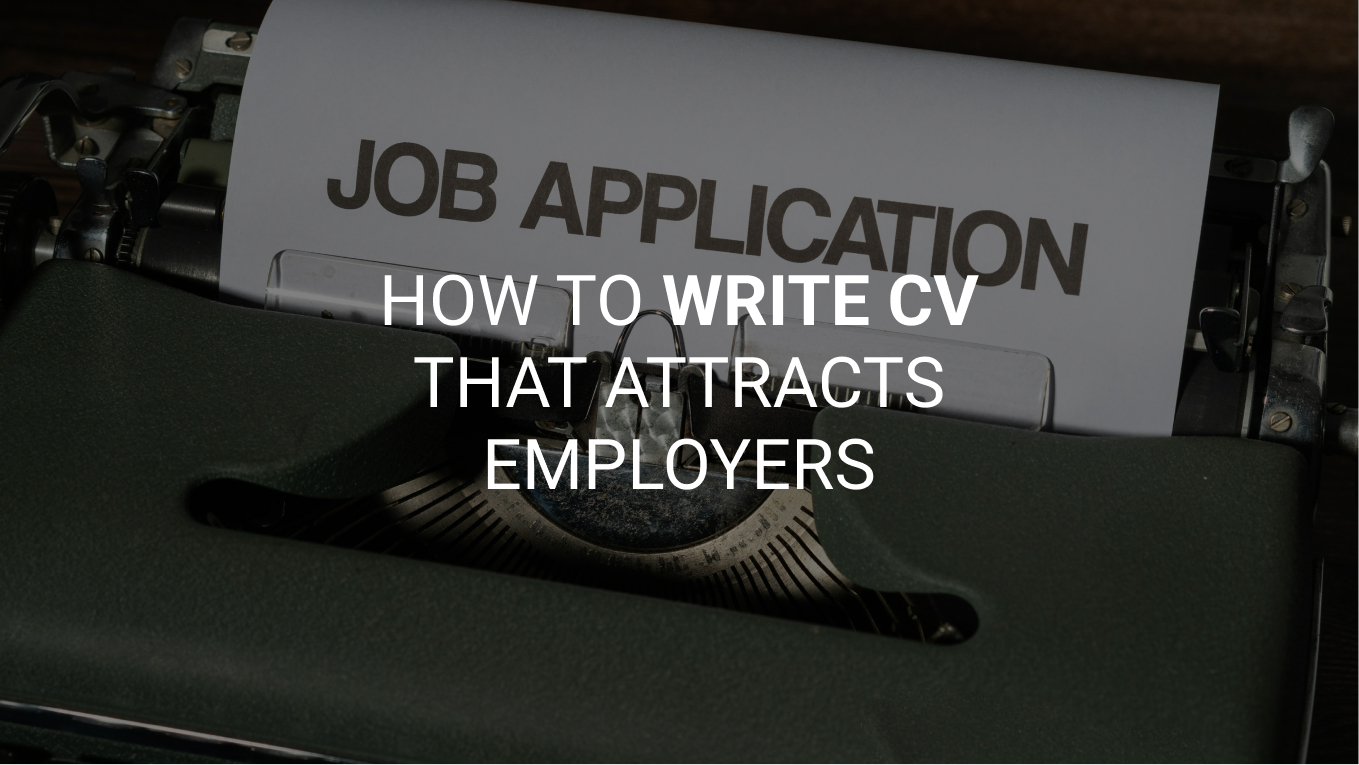Best Automotive CV Example 2025: How to Write CV That Attracts Employers
 28.08.2025
28.08.2025
 6 mins to read
6 mins to read

Create the perfect CV – use our free tips and CV examples
The automotive industry is one of the most innovative and competitive sectors in the world. Whether you are working on electric vehicles, autonomous driving systems, or advanced manufacturing, employers expect precision, creativity, and results. Your CV should reflect the same qualities. A clear structure, targeted content, and a focus on measurable achievements prove that you know the drill. Everyone knows how to write a CV. However, not many know how to put together a CV that gets you a dream job title. Below, we will break down each section of a strong automotive CV, explain what makes it effective, and give practical tips you can use immediately in your CV template.
Contact information – start for your perfect CV
First impressions count. In your CV, this is the header. This is where you provide the essential details recruiters need to reach you quickly. Keep it simple, professional, and free from unnecessary personal information such as age or marital status. In many countries, these are irrelevant or even discouraged.
What to include:
- Full name
- Phone number (use an international format)
- Professional email address
- LinkedIn profile (optional but recommended)
- City and country
CV header Example:
John Smith
+44 7700 900123
LinkedIn: linkedin.com/in/johnsmith
Birmingham, UK
Pro Tip: Avoid casual email addresses like [email protected]. It may sound cool to your friends, but not to a potential employer. A clean, name-based email address projects professionalism from the start.
Professional CV summary – your story in three sentences
Think of the professional summary as the headline to your career story. In 3–4 sentences, it should summarise your most relevant work experience, specialisations, and career goals. This is your chance to make recruiters want to read further. Use it well.
CV profile Example:
Experienced Automotive Engineer with 8+ years in vehicle design and testing, specialising in electric drivetrain systems. Proven track record of reducing production costs by 15% through process optimisation. Passionate about developing sustainable mobility solutions.
Pro Tip: If you struggle to write this section, imagine you have 30 seconds in an elevator with the hiring manager. What would you say to convince them to hire you?
Key skills – a snapshot of your capabilities
Recruiters in the automotive sector often scan this section first to see if you match their technical and soft skill requirements. Using the right keywords and bullet points here also improves your chances of passing Applicant Tracking Systems (ATS), which filter CVs before human eyes see them.
CV technical skills Example:
- CAD software (CATIA, SolidWorks)
- Electric powertrain development
- Automotive electronics & diagnostics
- Quality assurance (ISO/TS 16949)
- Lean manufacturing
- Team leadership & cross-functional collaboration
Pro Tip: Group related skills together for better readability, and prioritise the ones most relevant to the role you are targeting.
Professional experience – show your impact
This is the core of your CV. Instead of listing job responsibilities, focus on accomplishments and measurable results. Use action verbs to describe your contributions. Also, remember to present them in reverse chronological order.
CV experience Example:
Senior Automotive Engineer
Bosch Automotive, Stuttgart, Germany | 2018–Present
- Led a team of 6 engineers in developing a hybrid transmission system, improving efficiency by 12%.
- Implemented Lean manufacturing methods, reducing assembly time by 9%.
- Coordinated with suppliers to ensure compliance with ISO/TS 16949 standards.
Automotive Test Engineer
Jaguar Land Rover, Coventry, UK | 2014–2018
- Designed and executed performance tests for luxury SUV prototypes.
- Analysed data from test rigs, improving gearbox reliability by 18%.
Pro Tip: Always back up achievements with data. Phrases like ‘improved efficiency’ sound stronger when followed by ‘by 12%’ or ‘within 6 months’.
Education – your academic foundation
The education section demonstrates your formal qualifications and technical training. For the automotive industry, engineering, manufacturing, or design-related degrees are especially valued. Include your most recent and relevant qualifications first.
CV education Example:
MSc in Automotive Engineering
University of Warwick, UK | 2012–2014
BEng in Mechanical Engineering
University of Leeds, UK | 2008–2012
Pro Tip: If you completed industry-specific projects or dissertations (e.g., hybrid vehicle powertrain analysis), include them here to demonstrate early specialisation.
Certifications & training – evidence of ongoing learning
Automotive technology is evolving rapidly, driven in large part by the ever-growing boom for EVs. Showing that you have completed relevant certifications proves you are committed to staying up to date with industry trends.
CV certifications Example:
- Six Sigma Green Belt Certification
- ISO/TS 16949 Internal Auditor Training
- Electric & Hybrid Vehicle Systems (IMI Level 3)
Pro Tip: Highlight the certifications most relevant to the employer’s current focus areas.
Projects – spotlight on innovation
Not all career achievements happen in day-to-day job roles. Dedicated project work can highlight your creativity, leadership, and technical problem-solving skills, especially in an industry like automotive.
CV Example:
- Autonomous Driving Sensor Integration – led development of LiDAR and radar sensor fusion algorithms for a Level 3 autonomous prototype vehicle.
- Lightweight Chassis Redesign – achieved 8% weight reduction without compromising safety standards.
Pro Tip: Choose projects that show direct business value, such as cost savings, safety improvements, or technological breakthroughs.
Languages – end of your best CV
In a global industry like automotive, speaking more than one language can give you an edge, especially for companies with cross-border operations.
CV Example:
- English – Native
- German – Intermediate (B2)
- Spanish – Basic (A2)
Pro Tip: Even basic conversational skills can be valuable. If you are learning a language, note ‘Currently studying’. It signals one more important thing: that you are showing initiative.
Final thoughts – precision, clarity, and relevance in automotive CV in 2025
Your CV in the automotive industry should be much like a well-engineered vehicle: streamlined, efficient, and built for performance. Every section should contribute to a clear narrative supporting the main thesis: you are the right person for the role. Before finalizing it, ask yourself a few questions:
- Is it tailored to the specific job description?
- Are all achievements measurable?
- Is the layout clean and easy to read?
- Have you removed all typos and formatting errors?
Pro Tip: Print your CV and review it as if you were a hiring manager. If any section feels underpowered, go back and tune it up before sending — just like fine-tuning an engine. If you have any doubts or do not feel able to review it critically, ask someone you trust to give it a fresh perspective.
By presenting your skills and experience in a clear and measurable way, you not only show what you have done but also how you can contribute to innovation and performance in your next role. Keep it focused, tailored, and professional, and your CV will stand out in a sector where excellence is the standard.
Sources:
https://www.resumebuilder.com/resume-examples/automotive-technician
https://blog.kickresume.com/how-to-create-an-automotive-resume-examples/
https://www.distinctiveweb.com/resume-writing/car-format-resume-writing






